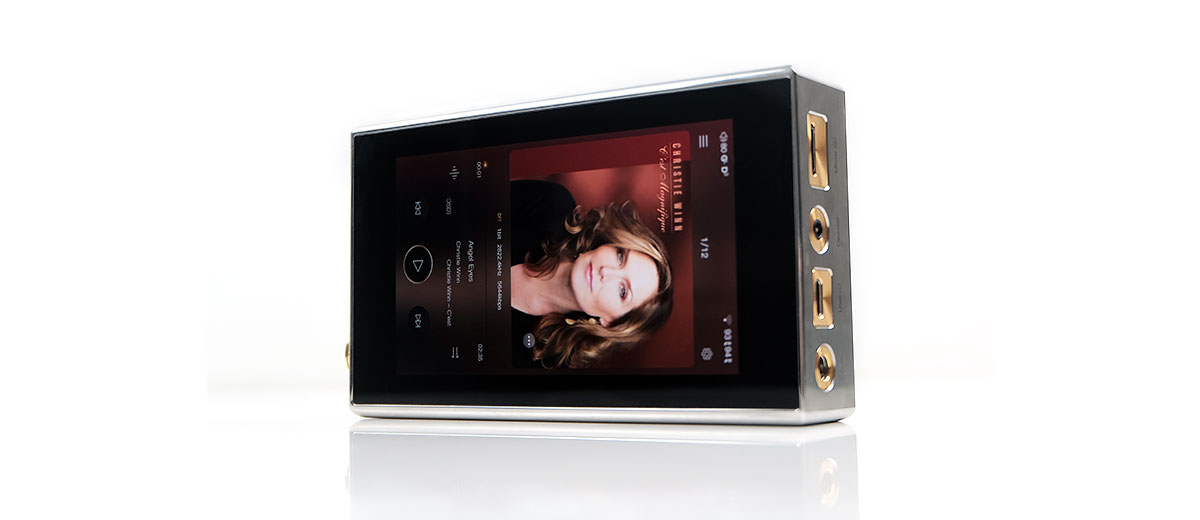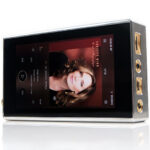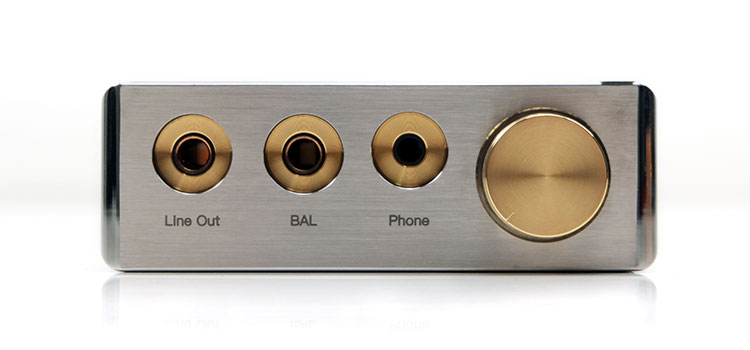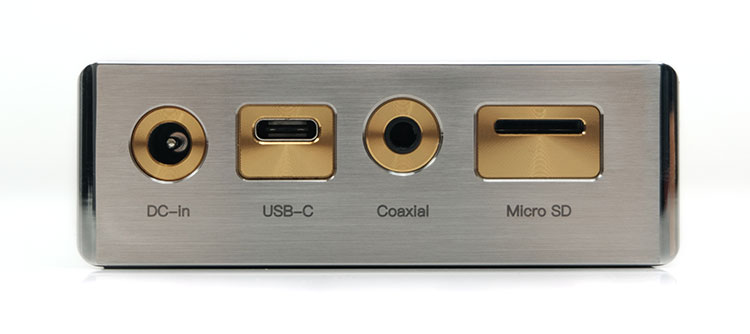The iBasso DX300 MAX is a high-end DAP featuring a dual AK4499EQ DAC and a separately controlled analog amp stage. It is priced at $2290.
Disclaimer: The iBasso DX300 MAX was sent to us as a sample in exchange for our honest opinion in this review. We thank iBasso for this opportunity.
To learn more about iBasso products reviewed on Headfonics you can click here.
Note, this 4-page review follows our new scoring guidelines for 2021 which you can read up on here.
The concept of the all-in-one desktop headphone system has been gaining in popularity over the last year or two. Components that offer a wide variety of services such as DAC, Amp, streaming, and playback in one device.
Ironically, portable audio enthusiasts have had that type of product for years now called the DAP. The only caveat until recently was the concept of power, both internal and output, and how they never really compete with full-blooded desktop units.
iBasso went some way to answer that question with the launch of the DX220 MAX transportable DAP which was one of our award winners in 2020. Now, fresh after the success of the DX300, they are back again with a ‘money no object’ MAX version called the DX300 MAX.
The DX300 MAX follows a similar blueprint to the DX220 MAX in terms of split power management between the digital and amplification stage but this time they have managed to include some very rare to get DAC chips. Rare also means limited edition so there are only 500 units of the DX300 MAX currently released at a price of $2290.
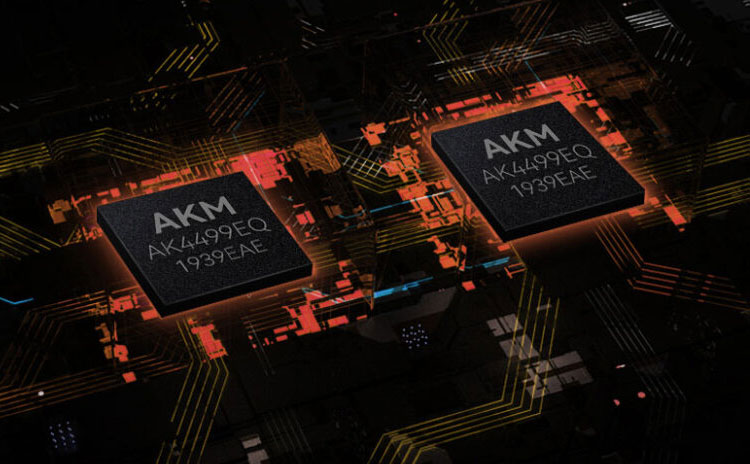
Tech Highlights
DAC
Probably the most important highlight to start with is that this is not a DX220 MAX redux with a DX300 digital circuit upgrade. The DX300 MAX is very different from the DX220 MAX in that regard since it uses a completely different DAC implementation.
This is still a delta-sigma DAC design but instead of the quad Cirrus Logic CS43198 build or dual ES9028 Pro we now have a dual AK4499EQ setup with system-wide bitperfect playback. That is a very rare high-end DAC chip in 2021 for 2 reasons.
The first is due to the fire at the Japanese plant in 2020 that sapped the product line of quantity forcing many competitors, including iBasso to move away from using AKM chips in their main product lines. The second is because the product life cycle is at an end with AKM discontinuing it so no more new units even if production is 100% at the factories.
The decoding capability is on par with the dual ES9028 Pro DX220 MAX at PCM 32Bit/384 kHz and up to DSD512 and a step up on that quad Cirrus Logic DX300 implementation which stopped at DSD256. Importantly, for TIDAL lovers, MQA has jumped from X4 in the DX220 MAX and X8 in the DX300 to a top-tier X16 in the DX300 MAX.
CPU
iBasso has retained the very impressive DX300 Qualcomm Snapdragon 660 SoC which is used by the likes of HiBy in their flagship R8. That is complemented by a similar headline-grabbing 6GB of RAM also taken from the DX300 giving it some class-leading performance numbers on AnTuTu which you can read in more detail on page 2.
The Snapdragon 660 also has a built-in BT5.0 and MU-MIMO 5G WiFi capability which iBasso seems to have taken advantage of with upgraded internal antennas for better transmission and volume from wireless streaming.

FPGA Master
Similar to the DX300, the DX300 MAX splits the audio processing from the main Android/Mango OS process handling by using an FPGA between the Snapdragon 660 and the SPDIF out and quad DAC array.
That leaves the 660 to primarily handle all the Android multi-tasking capabilities whereas the FPGA defaults to master mode to request the audio data stream directly from the CPU for time-domain processing via two Accusilicon Femtosecond oscillators. Hence the name FPGA master.
This provides the DX300 MAX digital side with proper clock control before going to the dual AK4499EQ DAC for conversion into the analog signal.
Power Supply
The implementation of the power supply into two separate and distinct configurations with no overlap is designed to really clamp down on noise filtering through the signal path from the USB port into the DAC and beyond into the amplification stage.
This isolation is achieved through the use of optocouplers and I2C isolators to completely isolate the digital to analog sections from any interference. iBasso has implemented this principle originally in the DX220 MAX and again in the DX300 MAX but with some enhancements.
In the original, there was a total of 5 individual li-poly batteries, 1 (3.8V 4400mAh) for the digital side, and 4 (4 x 900mAh 8.4V) for the amplification circuit in the form of a high voltage battery pack.
The DX300 MAX has the same five battery 4/1 split but this time the digital side gets a larger 6200mAh battery for the digital side and the same quad 900mAh 8.4V battery pack for the analog side. That should address any concerns on the DX300 MAX digital side draining too quickly on account of the more powerful SoC and RAM implementation.
This is also where portable becomes transportable f0r the DX300 MAX because the size of that 4 battery pack does require a DC-in charging port for the amp stage though the DAC stage is USB-C powered as per normal DAP designs.
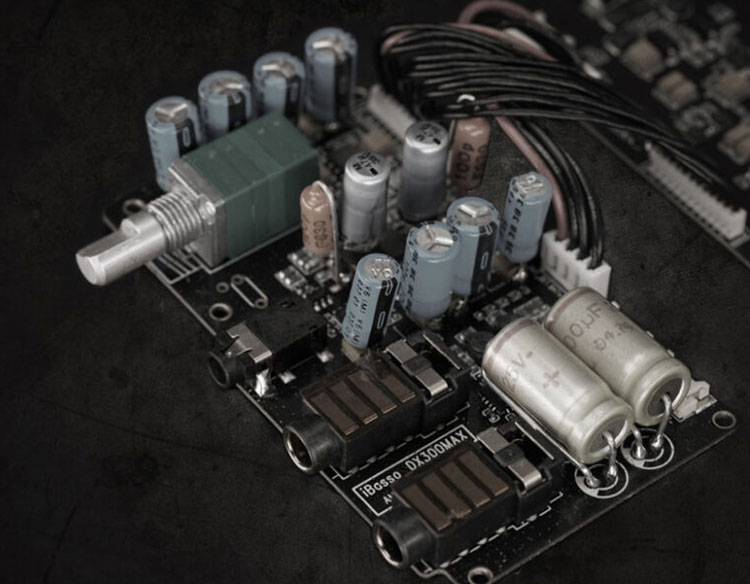
Amplification
The fixed amp stage inside the DX300 MAX is a discreet engineered Class A version of the original AMP8 card from the DX2 series so no opamps or switching transistors but also not a duplicate of the discreet engineering on the newer AMP11 and 12 cards from the DX300 series.
For a start, the maximum output power of the DX300 MAX has almost doubled from the 1240mW rating of the DX300 on a 32Ω load to a massive 2.4W, (both rated on their respective 4.4mm balanced PO outputs). That is indeed a desktop amplifier equivalent wattage right there.
On top of that, iBasso has managed to improve the performance rating of the amp stage alongside the increase in raw grunt compared to the DX220 MAX design. For example, they managed to increase the dynamic range performance by 3dB (balanced) at 125dB over 122dB and keep the SNR similar at 125dB.
The amp stage also has a dedicated true 4.4mm balanced lineout rated at 4.4V, (high gain) with an improved 1dB THD+N performance over the DX300. It is gain control meaning the voltage is not fixed, you can drop it down to presumably around 2V by switching to low gain via the digital side.
One final note is the potentiometer on the amp stage. iBasso has stuck with the custom 4-wiper potentiometer from the DX220 MAX which has less than +/-2dB channel tolerance.
Most normal analog potentiometers are 3 terminal-based with a single wiper. Volume on the amplifier is in the analog domain so channel balance but you do have access to the digital volume of the DAC which can, therefore, act as a quasi-preamp combined with the main analog control.
Design
For anyone new to the MAX series, the DX300 MAX is a beautiful and elegant-looking device with a minimalist approach to design aesthetics and excellent material for its build quality.
However, it is huge for a DAP though relatively compact as a desktop media system. It sits somewhere in-between transportable and portable for me given its weight is 820g, almost double the weight of the Sony 1z. This is a device best operated with both hands firmly on the chassis.
The form factor of the DX300 MAX has remained largely unchanged since the DX220 MAX save for a slightly taller dimension by around 1-2mm but it does weigh 120g more than the original. I suspect the larger digital capacity is one factor here for the enhanced weight.
The finishing is top-notch with the use of a CNC stainless steel body with soft curving and a slightly ‘aged’ finish for the main housing. This time around iBasso has opted for a branded matte cadet grey rear plate instead of a glossy black tempered glass finish on the DX220 MAX.
Both the analog potentiometer and sockets to the rear and front are all similarly 24k gold-plated much like the DX220 MAX and do create some nice visual focus points that compliment rather than create a garish contrast.
However, iBasso has changed both the application and knurling style on the knob so the aesthetic is more refined looking with better grip than the original.
Screen
The DX300 MAX screen looks to be the same 5″ 1080P IPS multi-touch capacitive panel from the D220 MAX, which, while being smaller than the 6.5″ smartphone-like screen from the DX300 does yield better density rates with the same 60Hz refresh rate.
The density is not quite as high as the older MAX setting at 420dpi compared to 480dpi so font characters have a similar thin styling similar to the DX300 font.
However, the viewing angle of the DX300 MAX screen is excellent, with clear legibility from very wide angles and every smooth scrolling performance. The color depth and saturation just fly off the screen, especially if you dial up the brightness to 100%.
The bezel dimensions on the front plate look unchanged around which means the DX300 MAX does not have that borderless design used by iBasso on their smaller DAPs. The flipside is the easier swiping given the lip of the included case is a few mm further back compared to the DX300.
iBasso has retained the protective Cornering Gorilla glass outer layer but the actual housing envelops that tricky curve making applying a screen protector application very easy to do. That should mean screen protectors will not present as many niggles during application. It also seems to have a slightly better level of protection on the sides of the DX220 MAX.
I/O
The DX300 MAX analog outs are to the front with digital inputs to the rear. The only exception is the SPDIF output which is also to the rear.
One change from the DX220 MAX is the memory card slot switch from the side panel to the rear panel which is a welcome move considering the previous position was blocked by the leather case. Now you do not have to take the unit out of the case to quickly change memory cards.
The finishing on the ports is 24k gold-plated and with all that large real estate it is no surprise that the labeling and spacing between them are excellent. You should be able to fit some fat barrels with ease on these ports both rear and front as well as properly read what each one does without reverting to an icon-based menu in the manual.
Analog
The front panel covers the dedicated 4.4mm line-out as well as the balanced and unbalanced PO which are 4.4mm and 3.5mm respectively. There is no room for a 2.5mm TRRS output though this was never a feature on all the legacy AMP8 amplification designs. It seems for now iBasso will keep 2.5mm TRRS confined to their smaller DAP card ecosystem.
One other nuanced change from the DX220 MAX front facia is the font thickness on the labeling which seems a bit thicker and more legible than before.
Digital
The DX300 MAX rear panel still offers both charging mediums. The digital battery side of the DX300 MAX is managed by the type-C USB port and the analog battery pack is managed by the DC-in 12V to the far left.
Right beside the new microSD slot is also a new coaxial-only port instead of a SPIDF output meaning the long time iBasso legacy optical output is no longer included in this version of the MAX.
Like the front, the labeling for all the ports has better density and thickness for increased legibility compared to the previous DX220 MAX version.
The main reason why iBasso can now fit the memory slot to the rear is the relocation of the power button from the rear to the right panel along with a new set of physical controls which we will talk about in more detail in the next section.
Click on page 2 below for controls, battery/storage features, and packaging
Click on page 3 below for software performance
Click on page 4 below for sound impressions, wired & wireless performance & pairings
Click on page 5 below for select comparisons

